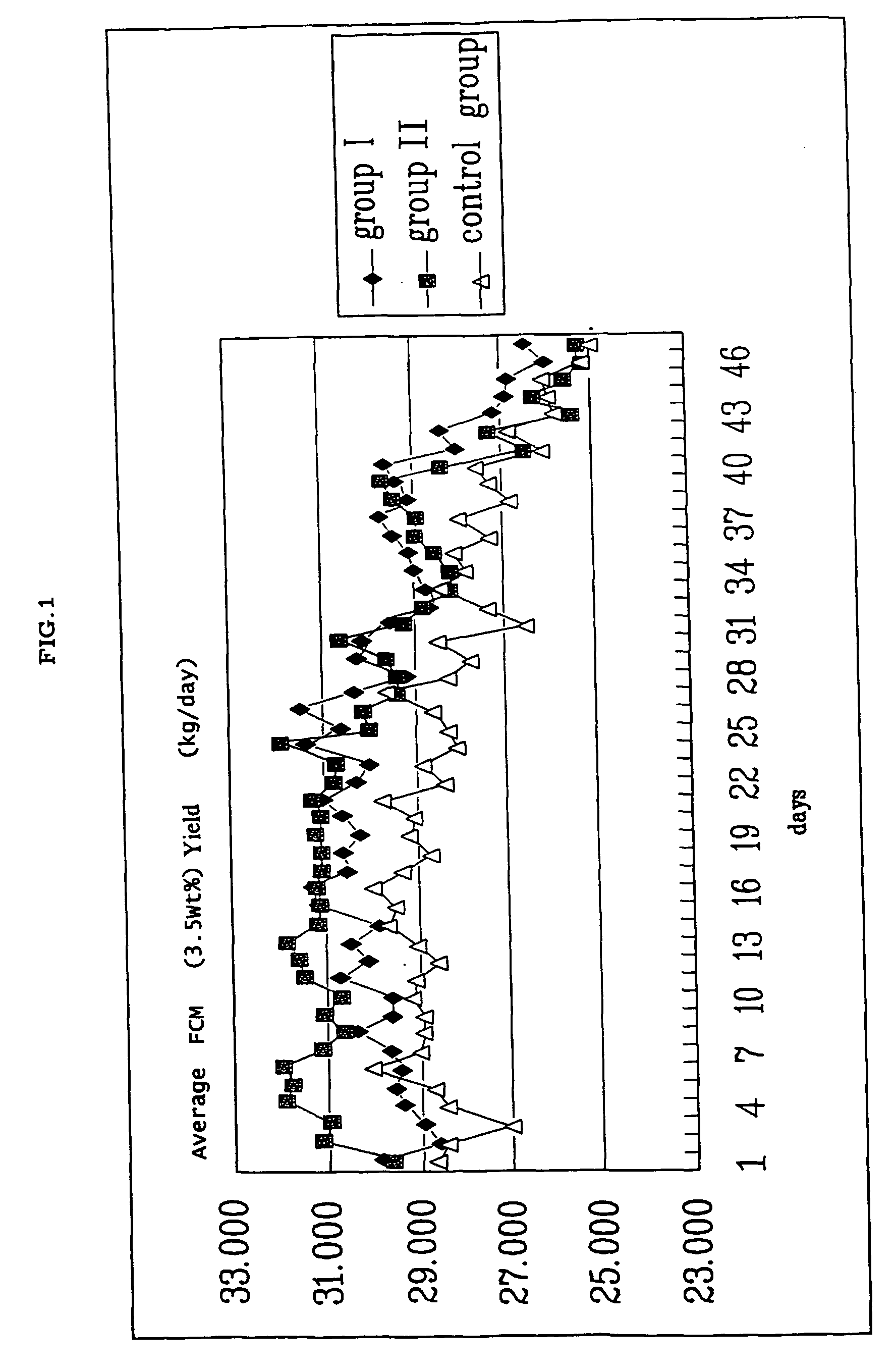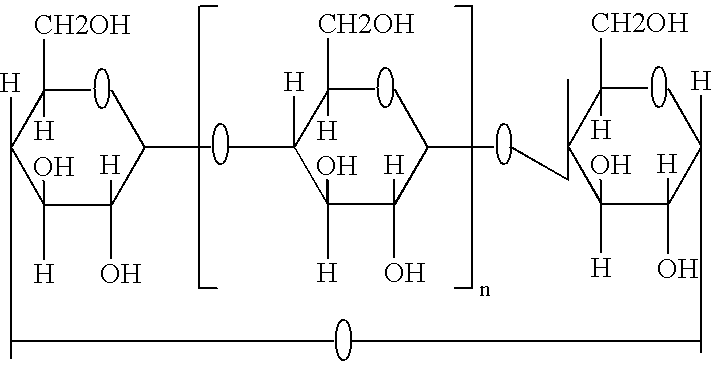Composition comprising cysteamine for improving lactation in dairy animals
a technology of cysteamine and composition, which is applied in the direction of drug compositions, biocide, sexual disorders, etc., can solve the problems of difficult to administer in a large farm, difficult to prepare sufficient quantity of suitable exogenous growth hormones for use on a large-scale application, and inability to meet the requirements of lactation of lactating animals. , to achieve the effect of improving lactation of lactating animals
- Summary
- Abstract
- Description
- Claims
- Application Information
AI Technical Summary
Benefits of technology
Problems solved by technology
Method used
Image
Examples
experiment 1
The experiment was conducted in a private dairy farm located in Guangming, PRC in April and May 2001. Thirty dairy cows were randomly selected for the experiment. Before the experiment, the cows were similar in weight, age, milk yield, and milk fat content and have similar calving number. All the cows had had approximately five months of lactation. The cows were randomly divided into three groups of ten, namely Group I, Group II and Group III, Group III being in the control. Prior to the experiment, there was no statistical difference (p>0.05) on average milk yield among the three groups of cows. Table 1 below shows data in respect of the three groups of cows and milk produced therefrom prior to the experiment.
TABLE 1Characteristics of diary cows before experimentGroupCharacteristicsGroup IGroup IIGroup IIINumber of cows101010Average number of calving 1 1 1Average lactation period (days)212.8 ± 5.20 208.4 ± 4.05 208.3 ± 3.91 Average milk yield (kg / day)27.5...
experiment 2
100 black & white dairy cows were used in the experiment. Before the experiment, the average body weight of the dairy cows was about 600 kg; the average lactation period of the cows was about 135th day and the average milk production was about 35 kg. The quality of the milk produced by the cows prior to the experiment was similar. The cows were not administered with any cysteamine products beforehand.
The cows were equally divided into one test group and one respective control group. Each of the test and control groups are further divided into four sub-groups during their 19th week of lactation, namely Groups I to IV, according to their actual milk production, calving history and stage of lactation. The prior milk production (MP) of the Groups I to IV cows were MP≦30 kg, 30 kg<MP≦35 kg, 35 kg<MP≦40 kg, 40 kg<MP respectively.
Procedure and Materials
The experiment was carried out during the 20th to 32nd week of lactation of the cows. The act...
experiment 3
Thirty-two black & white dairy cows were used in the experiment and were randomly divided into four groups, namely test Groups I to III, and a control group. Each group had eight cows. The characteristics of milk produced by the cows before the experiment is summarized in Table 17 below.
TABLE 18Dairy performance of the four groups of cowsbefore the experimentGroupCharacteristicsIIIIIIControlNumber of cows 8 8 8 8Calving number 1 1 1 1Day of lactation20202020Daily milk production, 26.90 ± 1.91 26.84 ± 4.51 26.76 ± 3.77 26.74 ± 4.47kg / cow / day3.5 wt % FCM, kg / cow / day 28.22 ± 2.37 29.81 ± 2.48 28.35 ± 3.99 29.73 ± 3.35Milk fat content, wt % 3.90 ± 0.56 4.19 ± 0.58 3.87 ± 0.93 4.20 ± 0.78Daily milk protein698.88 ± 63.64754.59 ± 49.45744.93 ± 52.86713.29 ± 76.97production, g / cow / dayNumber of somatic cells in1097.4 ± 1070.2803.00 ± 1113.4126.90 ± 87.10 99.90 ± 136.50milk, 103 / ml
Procedure and Materials
The cysteamine-containing composition used was the same comp...
PUM
| Property | Measurement | Unit |
|---|---|---|
| Fraction | aaaaa | aaaaa |
| Fraction | aaaaa | aaaaa |
| Fraction | aaaaa | aaaaa |
Abstract
Description
Claims
Application Information
 Login to View More
Login to View More - R&D
- Intellectual Property
- Life Sciences
- Materials
- Tech Scout
- Unparalleled Data Quality
- Higher Quality Content
- 60% Fewer Hallucinations
Browse by: Latest US Patents, China's latest patents, Technical Efficacy Thesaurus, Application Domain, Technology Topic, Popular Technical Reports.
© 2025 PatSnap. All rights reserved.Legal|Privacy policy|Modern Slavery Act Transparency Statement|Sitemap|About US| Contact US: help@patsnap.com


